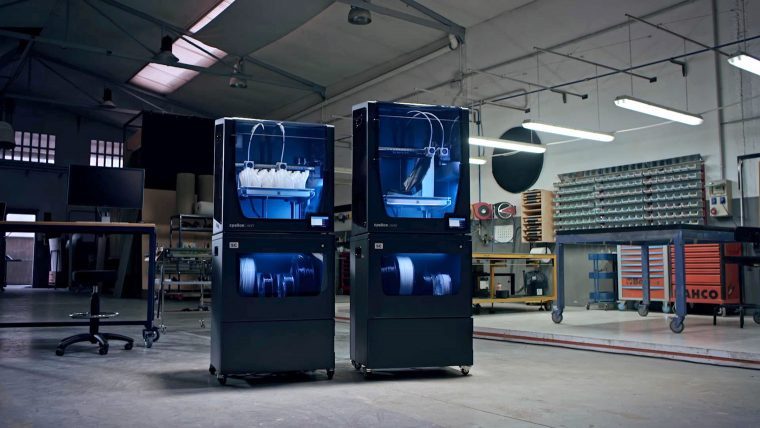BCN3D Reengineers 3D Printer Line Touting Productivity Focus
Revamped product family includes integrated desktop and workbench models featuring proprietary dual extruder technology.

BCN3D introduces new integrated 3D printer solutions in both the desktop and workbench segments. Image Courtesy of BCN3D
Latest News
September 17, 2020
Best-known for its proprietary dual extruder system, BCN3D is unveiling a revamped product line with integrated desktop and workbench 3D printer models tuned for low-volume production and end-use parts.
The Barcelona-based company got its start as a RepRap open source 3D printing project in 2012, launched its first commercial offerings in 2016, and spun off as an independent company in 2019. Today, BCN3D positions its line across a broad sector of industries and professional applications, touting its IDEX (Independent Dual Extruder) system as a key differentiator for industrial use cases given its ability to print two types of materials simultaneously to create different parts.
With its latest announcement, BCN3D is expanding its Fused Filament Fabrication (FFF) printer line, doubling down on performance and introducing new capabilities to drive innovation and engineering productivity, according to Xavier Martinez Faneca, BCN3D’s CEO. “Our duplication and mirror modes allow us to print two parts simultaneously, which delivers double productivity on the same machine,” he explains. “Our technology fits really well across a range of different vertical markets such as automotive, aviation, health care, even schools.”
BCN3D’s flagship model, the Epsilon, has been renamed the W50 and is now accompanied by the Epsilon W27, a smaller model with the same functionality and offered at a lower price. The W50 boasts a build volume of 420 x 300 x 400mm while the W27 offers a 420 x 300 x 220 mm build volume. Both feature dual extruders and support the IDEX system along with a passive heated chamber, a full color touch screen, safety pause capabilities, and a heated build plate that supports maximum temperature of up to 120 degrees C.
The Sigma Series now consists of the Sigma D25, replacing older versions, and targeted for desktop 3D printing use cases. The new unit has been reengineered with such features as enhanced heat distribution, a refined calibration process, new embedded electronics, and a remodeled extrusion system complete with reinforced axes. This unit is targeted for prototyping and educational and research purposes, officials say.
All units can be seamlessly integrated with the Smart Cabinet, a unit designed to store up to eight spools of filament in a humidity-controlled environment and to house an Uninterruptible Power Supply (UPS) that eliminates the risk of losing a print job in the case of a power outage. All the systems support a wide range of materials, Faneca says, and there are available printing profiles designed to flatten the learning curve and ensure the best results from day one.
“Humidity is one of the main enemies of 3D printing—it can ruin a 3D print job and have a negative impact on the performance of part,” Faneca says. “The Smart Cabinet enhances the performance of 3D prints and increases the service life of spools.”
To learn more about the new family of BCN3D printers, watch this video.
Subscribe to our FREE magazine, FREE email newsletters or both!
Latest News
About the Author
Beth Stackpole is a contributing editor to Digital Engineering. Send e-mail about this article to [email protected].
Follow DE





